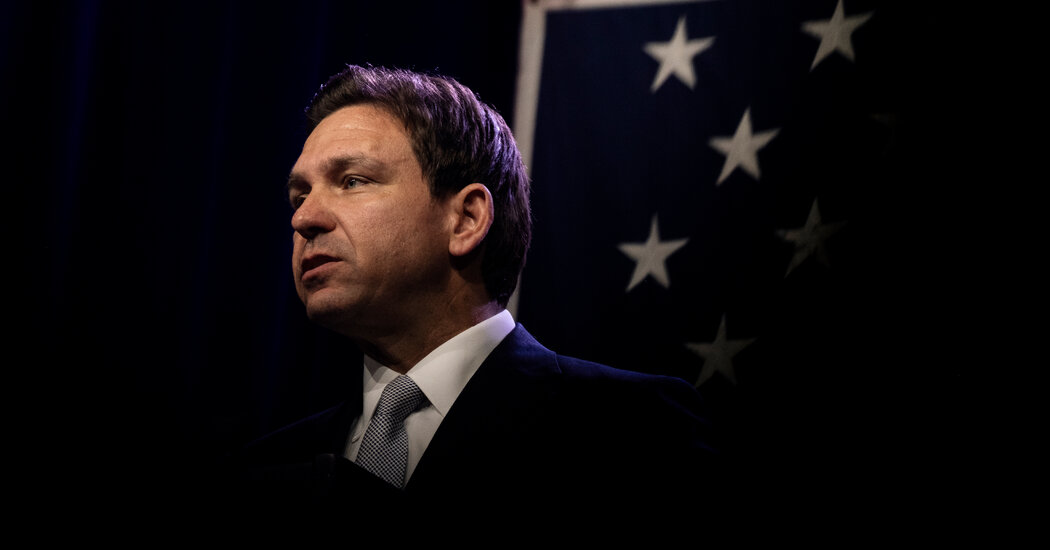How FAFSA Upended This Year’s College Admissions
There were just days left to process a batch of federal financial aid applications when Education Department officials made a fateful discovery: 70,000 emails from students all over the country, containing reams of essential data.
They were sitting in an inbox, untouched.
That discovery last week started a panicked, three-day crash effort by more than 200 of the department’s employees, including Richard Cordray, the nation’s top student aid official, to read through each of the emails one by one and extract crucial identifying information required for financial aid. The students’ futures depended on it.
“It needs to get untangled,” Mr. Cordray told his staff members on Thursday, according to recordings of two back-to-back meetings that The New York Times obtained. “So, you know, I’m getting pretty impatient.”
An exasperated staff member shot back, “We worked all night long — literally — all night.”
It was another setback in the botched rollout of a new version of the Free Application for Federal Student Aid, known as FAFSA, that millions of families and thousands of schools rely on to determine how students will pay for college. Three years ago, Congress ordered the Education Department to revamp the new form to make it easier and more accessible. It has been anything but.
For nearly six months, students and schools navigated a bureaucratic mess caused by severe delays in launching the website and processing critical information. A series of blunders by the department — from a haphazard rollout to technical meltdowns — have left students and schools in limbo and plunged the most critical stage of the college admissions season into disarray.
‘Hanging on by their fingernails’
In a normal year, students would be sorting through their financial aid offers by now, giving them plenty of time to prepare for the traditional decision day on May 1, when many schools expect commitments.
But this is not a normal year.
Because of the delays in the FAFSA rollout, schools do not have the information they need from the government to assemble financial aid offers. Students have had to postpone decisions about where to attend college because they have no idea how much aid they will receive.
Many schools are pushing back their enrollment deadlines to give students more time to figure out their finances, throwing college budgets and wait lists into chaos.
The Education Department has promised to meet a self-imposed deadline of Friday to send students’ financial information to schools.
But the task ahead is monumental. The department is working with 5 million applications that are in so far, but more than 10 million additional ones are expected to roll in as students make their way through the process, which is still not functioning without delays.
“Financial aid offices across the country are hanging on by their fingernails at this point,” said Justin Draeger, the chief executive of the National Association of Student Financial Aid Administrators.
A broken system
The goal of the revamped FAFSA system was to simplify the notoriously bewildering form by whittling it down from more than 100 questions to fewer than 40 and making it more accessible to lower-income students.
But it was not ready to roll out in October, when the FAFSA form usually becomes available for students to submit their families’ financial details to the government.
In late December, when the system finally launched, the problems were immediately apparent.
Technical malfunctions prevented many students from gaining access to the form on the website. Students reported being repeatedly kicked out or locked out of the form, or hung up on after holding for 30 minutes to three hours for someone to answer the department’s help line.
The bungled rollout has upended a critical function of the federal student aid process.
The government needs the FAFSA information to calculate how much federal aid students should receive. The schools, in turn, need that number to make their own calculations about how much a student should expect to pay at that particular college or university, after tallying up tuition and any extra scholarships.
For many students, the FAFSA estimate, which is sometimes received before they even hear back from any of the schools they applied to, is the first sign of hope that college is within reach.
Students in limbo
Andrea, a senior at KIPP Denver Collegiate High School in Colorado, will be the first person in her family to attend college. She has her heart set on Duke University.
But first, she has to navigate FAFSA.
“It’s agonizing,” said Andrea, 17, who asked to be identified by her first name to protect her parents, who immigrated to the United States from Mexico and are undocumented. “It’s deeper than a form. “It’s our futures.”
Her case collided with perhaps the most pernicious flaw in the rollout: The new form froze out applicants who could not provide a social security number for themselves or their parent or caregiver, something that had not been an issue with the old form.
To get students with missing social security data approved, the Education Department asked applicants like Andrea to submit by email photographs of a driver’s license, identity card or other documents that would verify their identity. As the department prepared to announce last week that the social security number issue had been resolved, officials realized that the inbox, and its 70,000 emails, had gone untouched.
That prompted Mr. Cordray to assemble emergency teams of volunteers to work overtime to blast through the backlog.
The students, he said, were relying on them.
“This is a lot of the Dreamers, new immigrants and the kind of people who, if they can just get a hand up in the higher education process can make their way in this country,” Mr. Cordray said. “We want them to be able to do that.”
Although the previous FAFSA form was long and complex, seniors at Andrea’s school managed to fill out their forms without much incident in previous years. KIPP Colorado, part of a network of public charter schools with some of the highest college acceptance rates for low-income students in the country, holds an annual FAFSA night, when families gather to complete the form together.
This year, only about 20 percent of the students at FAFSA night were able to complete the form — a huge change from previous years, school officials said.
Karen Chavez, an assistant principal of college and career for KIPP Colorado, said she usually tried to assure students that college is in reach.
But she is struggling with that message this year.
“It’s hard for us as counselors, having to watch what I say or how I say things,” she said, “because I want to guard their hearts and manage their expectations.”
Who’s to blame?
The Government Accountability Office has started an investigation into the FAFSA rollout at the request of Republicans, who say it took a back seat to other priorities, like President Biden’s student loan debt forgiveness programs.
Several senior officials at the White House and the Education Department have cited unreasonably short timelines, contractors who blew past deadlines and insufficient funding. Speaking on the condition of anonymity to openly discuss the problems, the officials acknowledged that other important assignments, such as restarting federal loan repayments and reopening schools after the coronavirus pandemic, used up vital resources.
“It’s not the case that anyone here didn’t realize how important this project is or how big this project is,” said James Kvaal, the under secretary at the Education Department. “And it’s been a top priority for us at the very highest levels of the department going back a year and a half now.”
There were obvious misses, such as a lack of robust user testing needed to catch what would turn out to be dozens of major technical problems. And the Education Department realized only in November that it had not adjusted a critical income formula, which would have denied more than $1 billion in aid to students.
Even as the department has tried to project optimism about its progress, officials privately harbored doubts.
On Feb. 13, Miguel A. Cardona, the education secretary, told reporters that once the technical problems were cleared, FAFSA would be a “15-minute process” and a “net win” for students and schools.
A week later, at a staff meeting, Mr. Cordray had a different assessment: “It’s really bad,” he said, according to people who heard the remarks. “It may get worse.”
In response to a request for comment for this article, Mr. Cordray said the Education Department’s focus was on delivering an updated and streamlined FAFSA.
“Our team is focused not on finger-pointing,” he said, “but on getting more federal student aid to deserving students and families.”
The stakes
There are growing concerns that the FAFSA problems will disproportionately affect traditionally underserved communities, particularly Black, Latino, first-generation and low-income students.
For many of them, the biggest factor in deciding on a college is how to pay for it.
Student advocates fear many of them will simply give up, skipping college or relying on expensive loans to pay for it.
“The equity stakes are monumental,” said Kim Cook, the chief executive of the National College Attainment Network. “The later those letters come, the more the conversation shifts from where to go to if to go.”
This month, the Education Department began deploying its staff across the country to provide a so-called concierge service, backed with $50 million from the department’s budget, to provide technical support to colleges struggling with the delays.
But as of last week, officials had met in person with only 20 of the 180 schools that had reached out for extra support, according to a senior department official.
Lodriguez Murray, the senior vice president for public policy and government affairs at the United Negro College Fund, said the consequences of the FAFSA delays could be on par with the devastation that historically Black colleges and universities experienced in 2011, when the government made it harder for parents to obtain loans to help pay for their children’s educations. Enrollment at H.B.C.U.s plummeted by 40,000 in one year when the aid stream was cut off.
“It’s a crisis that seems unnecessary,” Mr. Murray said of the FAFSA fallout, “and one that we hope can still be averted.”


